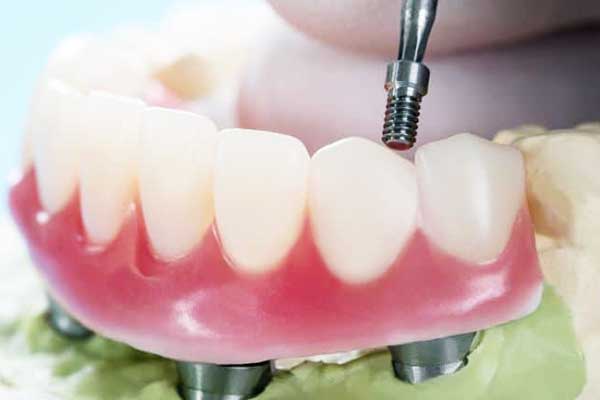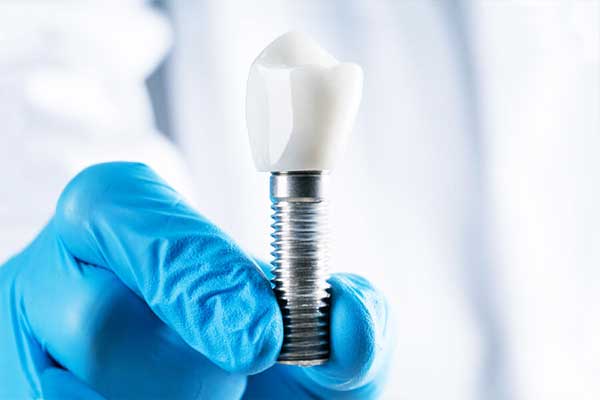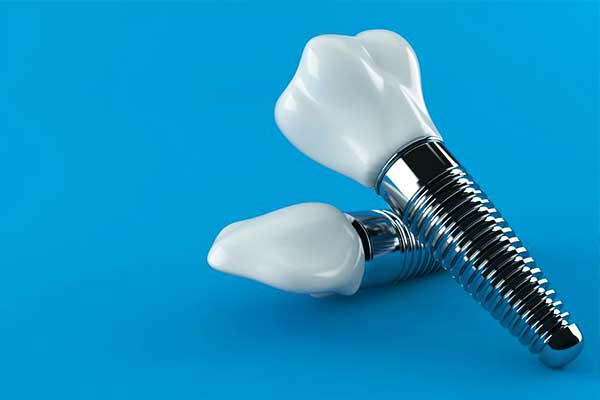How to Find a Good Dentist in Turkey
Turkey has revolutionized global dental tourism, becoming the world’s premier destination for affordable, high-quality dental care. With over 500,000 international patients annually and savings of 60-80% compared to Western countries, finding the right dentist in Turkey can transform your smile and budget.
This comprehensive guide provides expert insights, practical steps, and insider tips to help you navigate Turkey’s dental landscape and select the perfect dentist for your needs.
Why Turkey is the Global Leader in Dental Tourism
Exceptional Quality at Revolutionary Prices
Turkey’s dental industry combines world-class expertise with revolutionary affordability, offering premium treatments at costs that seem impossible elsewhere. The country’s strategic position, government support for medical tourism, and competitive market dynamics create unprecedented value for international patients seeking dental excellence.
Cost Advantage Overview:
- Single Dental Implant: €500-€1,500 (vs. €3,000-€5,000 in Europe)
- Hollywood Smile Makeover: €4,000-€15,000 (vs. €20,000-€40,000 in UK)
- All-on-4 Complete Treatment: €6,000-€20,000 (vs. €25,000-€50,000 in USA)
International Standards and Accreditation Excellence
Turkey maintains over 30 JCI-accredited dental facilities, ensuring international quality standards that match or exceed Western healthcare systems. These clinics employ internationally trained specialists, utilize cutting-edge technology, and maintain rigorous safety protocols that provide peace of mind for discerning international patients.
Strategic Geographic Advantage
Turkey’s unique position bridging Europe, Asia, and the Middle East makes it easily accessible from over 100 countries. With direct flights to Istanbul from 300+ global destinations and rich cultural experiences, dental treatment becomes a memorable journey combining healthcare with cultural immersion.
Step-by-Step Guide: How to Find Your Ideal Dentist in Turkey
Phase 1: Initial Research and Preparation (8-12 Weeks Before)
1. Define Your Treatment Needs
Before beginning your search, clearly identify your dental requirements and goals. Whether seeking complex reconstructive work, cosmetic enhancements, or routine treatments, understanding your needs helps narrow your search to specialists with relevant expertise.
Common Treatment Categories:
- Cosmetic Dentistry: Hollywood smile transformations, veneers, teeth whitening
- Restorative Dentistry: Dental implants, crowns, bridges, dentures
- Orthodontics: Braces, aligners, bite correction treatments
- Oral Surgery: Extractions, bone grafting, complex surgical procedures
- General Dentistry: Cleanings, fillings, root canal treatments
2. Establish Your Budget Parameters
Determine your total budget including treatment costs, travel expenses, accommodation, and miscellaneous expenses. This helps focus your search on dentists within your financial range while ensuring you don’t compromise on quality for cost savings alone.
Budget Planning Components:
- Treatment costs (60-70% of total budget)
- Flights and transportation (10-15% of total budget)
- Accommodation and meals (15-20% of total budget)
- Cultural activities and shopping (5-10% of total budget)
3. Research Potential Dentists and Clinics
Begin with comprehensive online research to identify potential dentists and clinics. Focus on establishments with strong online presence, professional websites, and comprehensive information about services, credentials, and patient testimonials.
Research Sources:
- Official clinic websites and social media profiles
- Medical tourism platforms and directories
- Patient review websites and forums
- Professional dental associations and accreditation bodies
- International healthcare quality organizations
Phase 2: Credentialing and Verification (6-8 Weeks Before)
4. Verify Professional Credentials and Qualifications
Ensuring your chosen dentist possesses proper qualifications and credentials is crucial for safe, effective treatment. Turkey’s dental professionals undergo rigorous training, and many pursue additional international certifications to serve global patients.
Essential Credential Verifications:
- Turkish Dental Association (TDB) Membership: Confirms licensed practice in Turkey
- University Degree Verification: Minimum 5-year dental program from accredited institution
- Specialty Certifications: Additional training in cosmetic dentistry, implantology, or oral surgery
- International Board Certifications: European or American dental board recognitions
- Continuing Education: Recent training in advanced techniques and technologies
How to Verify Credentials:
- Check Turkish Dental Association member directory
- Request copies of diplomas and certifications
- Verify university accreditation status
- Research dentist’s publication history and conference presentations
- Confirm specialty training completion certificates
5. Assess Clinic Accreditation and Safety Standards
Clinic accreditation serves as your assurance of safety, quality, and international standards compliance. Focus on facilities with recognized certifications that demonstrate commitment to patient safety and care excellence.
Key Accreditations to Look For:
- JCI (Joint Commission International): Gold standard for international healthcare
- ISO 9001:2015: Quality management system certification
- Turkish Ministry of Health License: Required government authorization
- Medical Tourism Association Membership: Ethical practice standards
- Slow Dentistry Certification: Patient-centered care philosophy
6. Evaluate Technology and Equipment Standards
Modern dental technology significantly impacts treatment outcomes, comfort, and efficiency. Leading Turkish dentists invest in cutting-edge equipment that enables precise diagnostics, comfortable procedures, and superior results.
Technology Assessment Checklist:
- 3D CBCT Imaging: For precise surgical planning and diagnostics
- Digital Impression Systems: For accurate, comfortable impressions
- CAD/CAM Technology: For same-day crown and veneer fabrication
- Laser Dentistry Equipment: For minimally invasive procedures
- Sterilization Systems: Hospital-grade infection control protocols
Phase 3: Communication and Consultation (4-6 Weeks Before)
7. Evaluate Communication Quality and Language Support
Effective communication forms the foundation of successful dental treatment, especially for international patients. Assess each dentist’s communication capabilities, language support, and patient coordination services.
Communication Assessment Criteria:
- Response time to initial inquiries (should be within 24-48 hours)
- Quality and detail of information provided
- Availability of multilingual patient coordinators
- Professional interpretation services during consultations
- Clear explanation of procedures, costs, and treatment timelines
8. Schedule Virtual Consultations
Most reputable Turkish dentists offer virtual consultations for international patients, allowing you to assess their expertise, communication style, and treatment approach before traveling.
Virtual Consultation Preparation:
- High-quality dental photos from multiple angles
- Recent X-rays and dental records
- Detailed description of concerns and desired outcomes
- List of questions about procedures, materials, and guarantees
- Discussion of timeline and accommodation preferences
Virtual Consultation Evaluation Points:
- Professional presentation and clinic environment
- Thoroughness of examination and assessment
- Quality of treatment plan and recommendations
- Transparency in pricing and payment options
- Follow-up care and warranty provisions
Phase 4: Due Diligence and Decision Making (2-4 Weeks Before)
9. Analyze Patient Reviews and Testimonials
Patient experiences provide invaluable insights into dentist capabilities, clinic operations, and overall satisfaction levels. Focus on detailed, verified reviews that discuss specific treatments and outcomes.
Review Analysis Strategy:
- Read reviews from multiple platforms and sources
- Look for patterns in patient feedback and experiences
- Focus on reviews from patients with similar treatment needs
- Assess both positive and negative feedback for balanced perspective
- Verify reviewer authenticity when possible
Red Flags in Reviews:
- Consistently poor communication or language barriers
- Reports of safety concerns or infection control issues
- Frequent mentions of hidden costs or pricing surprises
- Complaints about rushed treatments or inadequate care
- Multiple reports of complications or unsatisfactory outcomes
10. Compare Treatment Plans and Pricing
Obtain detailed treatment plans from your top dentist choices, comparing approaches, materials, timelines, and total costs. This comparison helps identify the best value while ensuring treatment quality meets your expectations.
Treatment Plan Comparison Elements:
- Specific procedures recommended and necessity
- Materials quality and brand specifications
- Treatment timeline and number of visits required
- Total cost breakdown with payment options
- Warranty coverage and follow-up care provisions
Essential Criteria for Selecting Your Turkish Dentist
Expertise and Specialization Match
For Complex Reconstructive Cases: Choose dentists with extensive experience in full mouth reconstruction, advanced implantology, and multi-disciplinary treatment coordination. Look for hospital-affiliated practices with comprehensive support services.
Ideal Qualifications:
- 10+ years of reconstructive dentistry experience
- Advanced implant surgery certifications
- Hospital privileges for complex procedures
- Team of specialists for coordinated care
- Comprehensive imaging and surgical facilities
For Cosmetic Excellence: Select dentists with artistic vision, advanced cosmetic training, and extensive portfolio of aesthetic transformations. Sehajmal International Beauty Center exemplifies this expertise with integrated dental and cosmetic surgery services.
Ideal Qualifications:
- Specialized cosmetic dentistry training
- Digital smile design capabilities
- Extensive before/after portfolio
- Integration with facial aesthetic procedures
- International cosmetic dentistry certifications
For Technology-Driven Care: Choose dentists who embrace cutting-edge technology for precision, comfort, and efficiency. These practitioners often provide minimally invasive treatments with superior outcomes.
Ideal Qualifications:
- Latest digital dentistry equipment
- Computer-guided surgery capabilities
- 3D printing and CAD/CAM technology
- AI-powered treatment planning
- Continuing education in dental technology
Communication and Patient Support Excellence
Language and Cultural Competency: Effective communication transcends language barriers through cultural understanding, patience, and comprehensive support services.
Excellence Indicators:
- Multilingual staff and patient coordinators
- Cultural sensitivity training for international patients
- Comprehensive pre-treatment education materials
- 24/7 communication availability during treatment
- Clear explanation of procedures and expectations
International Patient Services: Leading Turkish dentists provide comprehensive support services that transform medical tourism into seamless, enjoyable experiences.
Service Components:
- Airport pickup and luxury transportation
- Hotel booking assistance and recommendations
- Cultural tour coordination and entertainment
- Shopping assistance and local guidance
- Emergency contact and support availability
Safety and Quality Assurance Standards
Infection Control Excellence: Verify that your chosen dentist maintains hospital-grade infection control protocols that exceed international standards.
Safety Verification Checklist:
- Single-use instruments and disposable items
- Advanced sterilization equipment and protocols
- Proper waste disposal and environmental safety
- Staff health monitoring and vaccination requirements
- Regular safety audits and compliance verification
Emergency Preparedness: Ensure your dentist has comprehensive emergency response capabilities and hospital partnerships for complex situations.
Emergency Readiness Assessment:
- On-site emergency equipment and medications
- Hospital partnerships for complex emergencies
- 24/7 medical monitoring capabilities
- Medical evacuation coordination if required
- Comprehensive insurance acceptance and processing
Transform Your Health & Beauty
Experience World-Class Medical Care in Turkey
Why Choose Sehajmal Clinic?
Expert Medical Team
Internationally trained specialists
Premium Quality
State-of-the-art facilities & equipment
Competitive Pricing
Up to 70% savings compared to Europe/US

🎉 Special Offer!
Free consultation + Treatment plan
Response within 30 minutes | Available 24/7
Regional Guide: Where to Find the Best Dentists in Turkey
Istanbul: The Global Dental Capital
Istanbul hosts the highest concentration of internationally trained dental specialists, offering the most competitive pricing and superior patient infrastructure.
Istanbul Advantages:
- Over 150 specialized dental clinics and centers
- Highest concentration of JCI-accredited facilities
- Most competitive pricing due to market density
- Superior international patient infrastructure
- Direct flights from 300+ global destinations
- Rich cultural experiences during recovery
Premier Istanbul Dental Specialists:
- Sehajmal International Beauty Center (Şişli) – Integrated dental and cosmetic surgery
- Acıbadem Healthcare Group (Multiple locations) – Hospital-level dental care
- Memorial Healthcare Istanbul (Şişli) – Innovation leadership
- DentSpa (Central Istanbul) – Luxury wellness integration
- Dentakay (Taksim) – Digital innovation pioneer
Antalya: Mediterranean Dental Tourism Hub
Antalya combines quality dental care with resort-style atmosphere, offering relaxed recovery environments and competitive pricing.
Antalya Benefits:
- 10-15% lower costs compared to Istanbul
- Year-round excellent weather for recovery
- Resort-style accommodation options
- Relaxed, vacation-like treatment atmosphere
- Strong European patient base and support
Other Strategic Locations
Izmir – Aegean Excellence:
- 15-20% cost savings compared to Istanbul
- Strong academic affiliations with dental schools
- Modern facilities with international standards
- Excellent accessibility from Europe
Ankara – Capital Healthcare:
- Government-affiliated dental centers
- Academic hospital dental departments
- Research-focused treatment approaches
- Competitive pricing with quality assurance
Cost Analysis and Financial Planning
Comprehensive Treatment Cost Breakdown
Single Dental Implant (Complete):
- Premium Clinics: €800-€1,500
- Mid-Range Quality: €600-€1,000
- Value-Focused: €500-€800
- Includes: Implant, abutment, ceramic crown, all appointments
Hollywood Smile Makeover (16 Veneers):
- Premium Artistic Centers: €8,000-€15,000
- Quality Aesthetic Clinics: €5,000-€10,000
- Value Excellence: €3,500-€7,000
- Includes: Digital smile design, premium materials, all follow-up
All-on-4 Complete Treatment (Per Arch):
- Hospital-Level Centers: €8,000-€18,000
- Specialized Implant Clinics: €6,000-€12,000
- Quality Value Centers: €4,500-€9,000
- Includes: All implants, temporary and final prosthetics, all visits
All-Inclusive Package Value Analysis
Comprehensive Dental Tourism Package Components:
- All dental treatments with premium materials (65-75%)
- 4-5 star accommodation (7-10 nights) (15-20%)
- VIP airport transfers and transportation (3-5%)
- Professional patient coordination (5-8%)
- Cultural tours and entertainment (5-10%)
Sample Package Investment:
- Premium Hollywood Smile Package: €10,000-€18,000
- All-on-4 Complete Experience: €12,000-€25,000
- Single Implant Getaway: €1,500-€3,000
- Comprehensive Reconstruction: €20,000-€45,000
Global Cost Comparison
Turkey vs. United Kingdom:
- Overall Savings: 65-75% across all procedures
- Quality Maintenance: JCI-accredited facilities match UK standards
- Cultural Bonus: Rich historical and cultural experiences included
Turkey vs. United States:
- Cost Reduction: 70-80% for equivalent treatments
- Technology Advantage: Often more advanced equipment than US practices
- Service Excellence: Superior patient coordination and cultural hospitality
Treatment Planning and Logistics
Pre-Arrival Preparation Timeline
12 Weeks Before Travel:
- Complete initial research and dentist shortlisting
- Obtain current dental records and X-rays
- Begin virtual consultation process
- Research accommodation and travel options
8 Weeks Before Travel:
- Finalize dentist selection and book appointments
- Arrange travel insurance with dental coverage
- Book flights and accommodation
- Begin cultural research and language preparation
4 Weeks Before Travel:
- Confirm all appointment details and timelines
- Arrange airport transfers and transportation
- Download communication apps and emergency contacts
- Prepare medical history and medication lists
2 Weeks Before Travel:
- Final appointment confirmations and payment arrangements
- Pack appropriate clothing and recovery supplies
- Notify home dentist of planned treatment
- Confirm emergency contacts and insurance details
During Treatment: Maximizing Your Experience
Days 1-2: Assessment and Planning
- Comprehensive examination with advanced 3D imaging
- Treatment plan confirmation and adjustment
- Meet dental team and patient coordinator
- Cultural orientation and local area introduction
Days 3-8: Treatment Implementation
- Primary dental procedures with progress monitoring
- Daily comfort assessment and care adjustment
- Cultural activities during healing periods
- Progress documentation with professional photography
Days 9-10: Completion and Follow-up
- Final adjustments and quality verification
- Comprehensive home care instruction
- Warranty documentation and follow-up scheduling
- Cultural experience completion and departure preparation
Post-Treatment Success Strategies
Immediate Recovery (First 2 Weeks):
- Follow detailed home care instructions precisely
- Maintain regular communication with Turkish dental team
- Monitor healing progress with daily photos
- Avoid activities that could compromise treatment
Long-Term Maintenance:
- Schedule regular check-ups with local dentist
- Maintain excellent oral hygiene practices
- Plan annual return visits for warranty check-ups
- Participate in telemedicine follow-up consultations
Red Flags and Warning Signs to Avoid
Credential and Accreditation Red Flags
Warning Signs:
- Inability to provide verification of qualifications
- Lack of proper Turkish Dental Association membership
- Missing or expired accreditation certificates
- Reluctance to share before/after photo galleries
- No verifiable patient testimonials or reviews
Safety Concerns:
- Poor clinic hygiene or outdated facilities
- Lack of proper sterilization equipment
- Missing emergency response capabilities
- Inadequate infection control protocols
- Staff without proper certification or training
Communication and Service Red Flags
Poor Communication Indicators:
- Slow or unprofessional response to inquiries
- Language barriers without interpretation support
- Unclear or confusing treatment explanations
- Pressure tactics or unrealistic promises
- Lack of detailed treatment plans or cost breakdowns
Service Quality Concerns:
- No international patient coordination services
- Limited or no warranty coverage offered
- Rushed consultation or treatment planning
- Unwillingness to provide references or testimonials
- Hidden costs or surprise fees during treatment
Pricing and Value Red Flags
Suspicious Pricing Patterns:
- Prices significantly below market standards (potential quality compromise)
- Hidden fees not disclosed upfront
- Pressure for immediate payment or large deposits
- No clear payment terms or refund policies
- Unrealistic package deals that seem too good to be true
Success Stories: Real Patient Experiences
International Patient Testimonials
Sarah Johnson, United Kingdom – Hollywood Smile at Sehajmal: “Finding Dr. Sehajmal was the best decision I’ve made for my smile and confidence. The comprehensive research I did paid off – his artistic vision combined with cutting-edge technology created results that exceeded my expectations. The patient coordination was flawless, from airport pickup to follow-up care coordination with my UK dentist. Two years later, my smile still receives daily compliments, and the quality has remained perfect.”
Treatment: 16 E-max porcelain veneers with digital smile design
Investment: €9,500 (vs. £28,000 quoted in London)
Outcome: Complete smile transformation with natural-looking results
Michael Rodriguez, United States – All-on-4 Treatment: “After extensive research and virtual consultations with three Turkish dentists, I chose based on credentials, technology, and communication quality. The dentist I selected had JCI accreditation, advanced computer-guided surgery capabilities, and provided comprehensive treatment plans with transparent pricing. My new teeth function perfectly, and I saved over $35,000 compared to US pricing while receiving superior technology and care.”
Treatment: All-on-4 implant system with zirconia bridge
Investment: €11,500 (vs. $48,000 quoted in California)
Outcome: Full function restoration with dramatic quality of life improvement
Emma Chen, Australia – Complex Reconstruction: “Finding the right dentist in Turkey required careful research and credential verification. I focused on hospital-affiliated practices with multi-disciplinary teams and comprehensive support services. The dentist I chose had over 15 years of reconstructive experience, international certifications, and a track record of complex case success. The results transformed not just my smile, but my entire oral health and confidence.”
Treatment: Full mouth reconstruction with implants and crowns
Investment: €22,000 (vs. AUD $75,000 quoted in Sydney)
Outcome: Complete oral health restoration with aesthetic enhancement
Long-Term Success Tracking
Follow-Up Results Analysis:
- 5-Year Treatment Success Rate: 96.8% across leading Turkish dentists
- Patient Satisfaction Scores: 93% report “excellent” overall experience
- Warranty Claim Frequency: Less than 2.5% require warranty service
- Repeat Patient Rate: 38% return for additional treatments or family care
- Recommendation Rate: 89% recommend their Turkish dentist to others
Technology and Innovation in Turkish Dentistry
Cutting-Edge Equipment Standards
Advanced Diagnostic Technology:
- 3D CBCT Imaging: Precise anatomical analysis for surgical planning
- Intraoral Scanners: Digital impressions with enhanced accuracy
- AI-Powered Diagnostics: Predictive treatment planning and outcome modeling
- Digital Radiography: Reduced radiation exposure with instant results
- Optical Coherence Tomography: Advanced tissue analysis capabilities
Revolutionary Treatment Technology:
- CAD/CAM Systems: Same-day crown and veneer fabrication
- Robotic Surgery Assistance: Enhanced precision for complex implant procedures
- Laser Dentistry: Minimally invasive soft tissue procedures
- 3D Printing: Custom surgical guides and temporary restorations
- Nanotechnology Materials: Enhanced biocompatibility and durability
Innovation Leadership
Research and Development: Turkish dental professionals actively participate in international research, contributing to advancement in dental techniques, materials, and patient care protocols.
Innovation Areas:
- Stem cell therapy for tissue regeneration
- 3D bioprinting for custom implant solutions
- Virtual reality for patient education and anxiety management
- Artificial intelligence for treatment optimization
- Sustainable dentistry practices and eco-friendly materials
Cultural Integration and Turkey Experience
Beyond Dental Care: Complete Cultural Immersion
Istanbul Cultural Highlights:
- Historical Treasures: Hagia Sophia, Blue Mosque, Topkapi Palace exploration
- Cultural Districts: Sultanahmet, Galata, Beyoğlu neighborhood discovery
- Culinary Adventures: Traditional Turkish cuisine and cooking class experiences
- Shopping Experiences: Grand Bazaar, modern malls, artisan market visits
- Entertainment Options: Turkish baths, Bosphorus cruises, traditional music shows
Recovery-Compatible Activities:
- Gentle walking tours of historical neighborhoods
- Relaxing Turkish tea culture experiences
- Art gallery and museum visits for cultural enrichment
- Light shopping and souvenir selection
- Photography sessions showcasing your smile transformation
Practical Living Tips for Dental Tourists
Communication Excellence:
- Download translation apps for daily interactions
- Learn basic Turkish phrases for cultural connection
- Utilize clinic-provided communication support
- Join international patient groups for shared experiences
- Maintain regular contact with family and friends
Cultural Sensitivity Guidelines:
- Respect local customs and religious practices
- Dress appropriately for religious site visits
- Understand tipping culture and social expectations
- Appreciate Turkish hospitality and reciprocate warmly
- Create lasting friendships with locals and fellow patients
Premium Healthcare Experience
Transform your health and beauty journey with our world-class medical services. Experience excellence in every treatment.
Expert Medical Team
Internationally certified specialists
Safe & Secure
Advanced safety protocols
24/7 Support
Round-the-clock patient care
Ready to Begin?
Take the first step towards your transformation
+90 555 149 87 99
Frequently Asked Questions
How do I verify a Turkish dentist’s credentials and qualifications?
Verify credentials through the Turkish Dental Association (TDB) member directory, request copies of diplomas and certifications, confirm university accreditation status, and research the dentist’s publication history and conference presentations. Leading dentists like those at Sehajmal International Beauty Center provide comprehensive credential documentation and maintain international certifications. Always verify specialty training completion certificates and continuing education participation for specialized procedures.
What accreditations should I look for when choosing a dental clinic in Turkey?
Prioritize JCI (Joint Commission International) accreditation as the gold standard for international healthcare quality. Also look for ISO 9001:2015 quality management certification, Turkish Ministry of Health licensing, Medical Tourism Association membership, and Slow Dentistry certification. These accreditations ensure international safety standards, quality protocols, and patient-centered care approaches that provide confidence for international dental tourists.
How much can I expect to save on dental treatment in Turkey compared to my home country?
Savings typically range from 60-80% compared to Western countries while receiving equivalent or superior quality care. A Hollywood smile makeover costing £25,000 in the UK can be obtained for €8,000-€15,000 at premium Turkish clinics. Dental implant procedures costing $5,000 in the US are available for €600-€1,500. Even including travel and accommodation costs, most patients save 50-70% on total expenses while enjoying cultural experiences.
What should I include in my virtual consultation with Turkish dentists?
Prepare high-quality dental photos from multiple angles, recent X-rays and dental records, detailed description of concerns and desired outcomes, comprehensive medical history, and specific questions about procedures, materials, warranties, and follow-up care. Leading clinics provide virtual treatment previews using digital smile design technology, allowing you to visualize potential outcomes before committing to treatment.
How do I ensure safety and quality when getting dental treatment in Turkey?
Choose JCI-accredited facilities with verified credentials, modern equipment, and comprehensive safety protocols. Verify dentist qualifications through professional associations, read verified patient reviews from multiple sources, ensure comprehensive travel insurance with dental coverage, and confirm emergency response capabilities. Reputable clinics maintain hospital-grade sterilization, 24/7 medical monitoring, and international follow-up networks for ongoing care.
What’s included in a typical dental tourism package in Turkey?
Comprehensive packages typically include all dental treatments with premium materials, 4-5 star hotel accommodation, VIP airport transfers, professional patient coordination, interpretation services, and cultural tour opportunities. Sehajmal International Beauty Center and other premium clinics provide luxury amenities, personal coordinators, global follow-up networks, and warranty coverage. Package values range from €5,000-€35,000 depending on treatment complexity and accommodation level selected.
Can I combine dental treatment with other medical procedures in Turkey?
Many Turkish medical centers offer integrated services combining dental and cosmetic surgery procedures. Sehajmal International Beauty Center specializes in coordinated treatments combining smile makeovers with facial procedures, ensuring optimal aesthetic harmony, reduced recovery time, and cost savings. This comprehensive approach provides unified treatment coordination and superior aesthetic outcomes while maintaining the highest safety standards.
What follow-up care and warranty coverage can I expect from Turkish dentists?
Reputable Turkish dentists offer comprehensive warranties ranging from 2-10 years depending on procedures performed. Implant treatments typically include 5-10 year warranties, while cosmetic work carries 2-5 year coverage. Follow-up care includes telemedicine consultations, global network partnerships for local support, detailed treatment documentation for your home dentist, and annual return visit coordination. Premium clinics provide international follow-up networks ensuring long-term treatment success.
Conclusion: Your Pathway to Dental Excellence in Turkey
Finding a good dentist in Turkey requires careful research, thorough verification, and strategic planning, but the rewards—exceptional quality care at revolutionary prices—make the effort worthwhile. Turkey’s dental professionals combine international training, cutting-edge technology, and cultural hospitality to create transformative experiences that extend far beyond dental treatment.
Success in your Turkish dental journey depends on focusing on credentials, accreditation, communication quality, and patient support services rather than price alone. Leading facilities like Sehajmal International Beauty Center exemplify the highest standards of Turkish dental excellence, combining artistic vision with technical precision to deliver life-changing results.
Your journey to optimal oral health and a confident smile begins with informed decision-making and careful dentist selection. By following this comprehensive guide, verifying credentials thoroughly, and choosing accredited professionals, you can achieve remarkable dental transformations while experiencing Turkey’s rich culture and warm hospitality.
The investment in research and preparation pays dividends in treatment outcomes, safety assurance, and overall satisfaction. Turkey’s dental professionals stand ready to provide world-class care that transforms smiles, boosts confidence, and creates lasting positive change in patients’ lives.
Ready to find your ideal dentist in Turkey? Contact Dr. Sehajmal and the expert team at Sehajmal International Beauty Center for personalized consultation and guidance in selecting the perfect dental specialist for your unique needs and goals.
📞 WhatsApp Consultation: +905312582847
📍 Address: Merkez, İskenderoğlu Sk. No:45, 34381 Şişli/İstanbul, Turkey
🗺️ Find Us on Google Maps
⭐ Rated 5.0/5 by 457+ International Patients
Experience the difference that comes from choosing Turkey’s most trusted and comprehensive dental healthcare specialists.
Premium Dental Services
Experience world-class dental care in Turkey with state-of-the-art technology and expert professionals
Ready to Transform Your Smile?
Contact us today for a free consultation with our dental experts
WhatsApp Consultation+90 555 149 8799
Available 24/7 for consultations
Why Choose Sehajmal Dental Clinic?
International Standards
World-class dental care with international certifications
Affordable Prices
Premium dental treatments at competitive Turkish prices
Dental Tourism
Complete treatment packages with accommodation support






